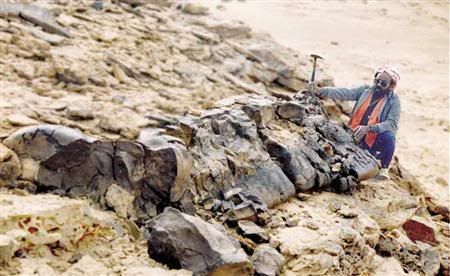Snapshots In My Time...
Of My Time.....Hauntings.

Scientists have identified the Godzilla of fungi, a giant, prehistoric fossil that has evaded classification for more than a century, U.S. researchers said on Monday.
A chemical analysis has shown that the 20-foot-tall (6-metre) organism with a tree-like trunk was a fungus that became extinct more than 350 million years ago, according to a study appearing in the May issue of the journal Geology.
Known as Prototaxites, the giant fungus originally was thought to be a conifer. Then some believed it was a lichen, or various types of algae. Some suspected it was a fungus.
"A 20-foot-fungus doesn't make any sense. Neither does a 20-foot-tall algae make any sense, but here's the fossil," C. Kevin Boyce, a University of Chicago assistant professor of geophysical sciences, said in a statement.
Francis Hueber of the National Museum of Natural History first suggested the fungus possibility based on an analysis of the fossil's internal structure, but had no conclusive proof.
Boyce and colleagues filled in the blanks, comparing the types of carbon found in the giant fossil with plants that lived about the same time, about 400 million years ago.
If Prototaxites were a plant, its carbon structures would resemble similar plants. Instead, Boyce found a much greater diversity in carbon content than would have been expected of a plant.
Fungi, which include yeast, mold and mushrooms, represent their own kingdom, neither plant nor animal. Once classified as plants, they are now considered a closer cousin to animals but they absorb rather than eat their food.
Samples of the giant fungi have been found all over the world from 420 million to 350 million years ago during a period in which millipedes, bugs and worms were among the first creatures to make their home on dry land. No animals with a backbone had left the oceans yet.
The tallest trees stood no more than a couple of feet (a meter) high, offering little competition for the towering fungi.
Plant-eating dinosaurs had not yet evolved to trample Prototaxites' to the ground. "It's hard to imagine these things surviving in the modern world," Boyce said.
0 comments:
Post a Comment